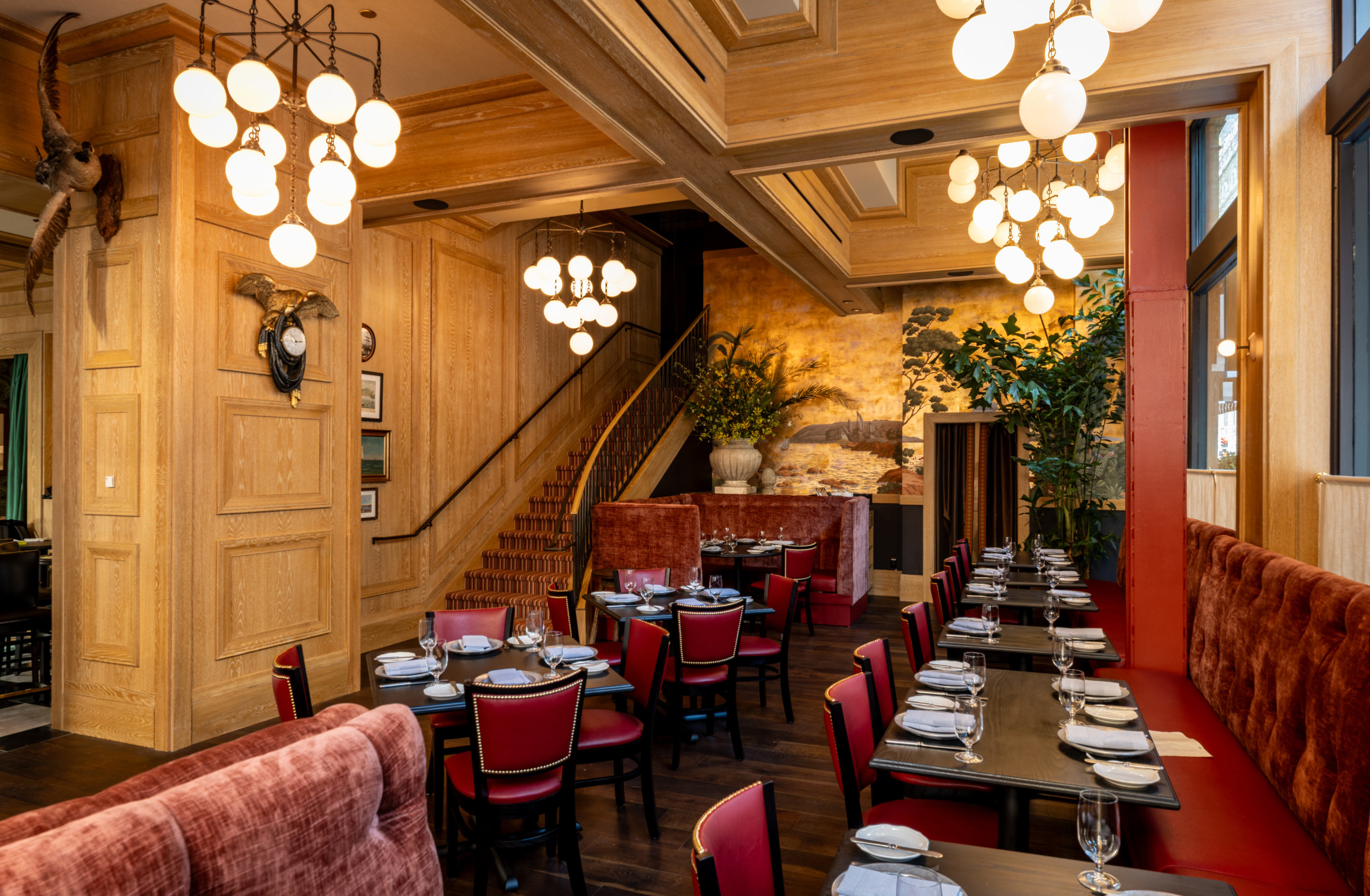
Every time your restaurant phone rings unanswered, you're not just missing a call—you're watching potential revenue walk out the door. Recent industry research reveals a staggering reality: 43% of restaurant phone calls go unanswered, costing the average venue up to $292,000 annually in lost business. (Slang AI)
This isn't just about poor customer service—it's about survival in an industry where margins are razor-thin and every cover counts. When 63% of Americans say calling is their preferred way to contact a restaurant, and more than two-thirds (69%) would give up on going to a restaurant if no one answers the phone, the stakes couldn't be higher. (Hostie)
The good news? This problem is entirely solvable. Modern AI solutions like Hostie are helping restaurants capture every call, convert more inquiries into reservations, and recover hundreds of thousands in previously lost revenue. Let's dive into the numbers, explore real-world success stories, and show you exactly how to plug this expensive leak in your restaurant's revenue stream.
The February 2025 Breez study that revealed the 43% missed call statistic isn't just another industry report—it's a wake-up call for restaurant owners everywhere. When we calculate the financial impact, the numbers are sobering:
For a typical mid-sized restaurant, this translates to losing nearly $300,000 annually—enough to cover the salaries of 6-8 full-time employees or fund a complete kitchen renovation. (Slang AI)
Restaurant phone call management is crucial but often neglected due to staff shortages and competing priorities during service. (Slang AI) The reality is that your front-of-house team is juggling multiple responsibilities:
Missed calls don't just represent immediate lost revenue—they create a cascade of negative impacts:
Customer Experience Damage: When potential guests can't reach you, they form negative impressions before ever stepping foot in your restaurant. This is particularly damaging for special occasions like anniversaries or business dinners where the stakes are high.
Competitive Disadvantage: While you're missing calls, your competitors are capturing those same customers. In today's competitive landscape, availability often trumps quality in the initial decision-making process.
Operational Inefficiency: Staff stress increases when they're constantly torn between serving present guests and answering ringing phones, leading to mistakes and reduced service quality.
A mid-sized pizzeria in San Francisco was losing approximately $180,000 annually due to missed calls during their peak dinner rush. After implementing Hostie AI, they saw remarkable results:
Before Hostie:
After Hostie:
Financial Impact: The pizzeria recovered $156,000 in previously lost revenue within the first year, representing an ROI of over 650% on their Hostie investment.
Hostie's impact extends beyond single locations. After integrating with partner establishments such as Flour + Water and Slanted Door, Hostie now handles over 80% of their guest communications automatically. (Hostie) This level of automation allows these high-end establishments to maintain their reputation for exceptional service while ensuring no potential guest goes unserved.
Burma Food Group saw a 141% boost in over-the-phone covers after implementing Hostie's virtual concierge system. (Hostie) This dramatic improvement demonstrates how AI can not only prevent revenue loss but actually drive growth by making phone ordering more accessible and efficient.
Hostie provides automated 24/7 call answering with natural conversation abilities, ensuring no call goes unanswered regardless of time or staff availability. (Hostie) The AI doesn't just pick up the phone—it engages in meaningful conversations that feel natural and helpful.
Key Features:
The system handles the full spectrum of reservation-related tasks:
Hostie integrates directly with the tools restaurants are already using—existing reservation systems, POS systems, and even event planning software. (Hostie) This means no disruption to current workflows while dramatically improving efficiency.
Integration Benefits:
Customers tend to call restaurants around mealtimes, specifically at 5 pm, 4 pm, and noon on weekdays, and at noon, 5 pm, and 1 pm on weekends. (Slang AI) Understanding these patterns allows you to optimize your AI call flows for maximum effectiveness during peak periods.
Customers call restaurants for various reasons, and each requires a different approach:
Making New Reservations (35% of calls):
Placing Orders (28% of calls):
Changing Existing Reservations (18% of calls):
General Inquiries (19% of calls):
1. Prioritize Speed and Clarity
Your AI should answer within 2-3 rings and immediately identify the restaurant and offer assistance. Customers calling during busy periods are often in a hurry.
2. Offer Multiple Pathways
Not every caller has the same needs. Design flows that quickly route customers to the most relevant assistance—reservations, takeout, or general information.
3. Build in Escalation Points
While AI can handle 80% of calls, complex situations still require human intervention. (Hostie) Design clear escalation triggers for situations like:
4. Capture Every Opportunity
Even if the primary request can't be fulfilled (no tables available), the AI should offer alternatives:
Call Volume and Answer Rates:
Conversion Metrics:
Revenue Impact:
A well-designed KPI dashboard should provide both real-time monitoring and historical analysis. Key elements include:
Real-Time Monitoring:
Historical Analysis:
Actionable Insights:
The most successful restaurants use their call data to make informed operational decisions:
Menu Optimization: Track which items are most requested via phone to inform menu placement and staff training priorities.
Staffing Adjustments: Use call volume patterns to optimize front-of-house scheduling, ensuring human staff are available for complex situations while AI handles routine inquiries.
Marketing Insights: Phone conversations reveal customer preferences and concerns that can inform marketing campaigns and promotional strategies.
Starting at just $199 a month, Hostie AI represents a fraction of the cost of hiring additional staff to handle phone calls. (Hostie) Consider the comparison:
Traditional Approach:
Hostie AI Approach:
Net Savings: $37,612-52,612 annually, plus the recovered revenue from previously missed calls.
To calculate your potential ROI from implementing AI call management:
Example Calculation:
Improved Customer Satisfaction: 89% of Americans would be open to using an AI agent for tasks related to interacting with a restaurant, indicating strong consumer acceptance. (Hostie)
Staff Efficiency: With AI handling routine calls, your human staff can focus on providing exceptional in-person service, leading to better reviews and repeat business.
Competitive Advantage: While competitors struggle with missed calls, your restaurant becomes known for reliability and accessibility.
Data-Driven Insights: Every call generates valuable data about customer preferences, peak times, and operational efficiency.
Current State Analysis:
System Integration Planning:
Technical Implementation:
Staff Preparation:
Soft Launch:
Full Deployment:
Performance Monitoring:
Feature Enhancement:
Artificial Intelligence is expected to be a game-changer for restaurants in 2024 and beyond, optimizing operations and enhancing customer experiences. (AppFront) The technology has evolved from simple chatbots to sophisticated conversational AI that can handle complex restaurant interactions.
Key Trends Driving Adoption:
Voice AI represents the newest generation of artificial intelligence for restaurants, capable of engaging in limitless conversations at once. (ConverseNow) This technology combines the efficiency of online ordering with the customizable, high-touch experience of traditional phone conversations.
Advantages of Voice AI:
As AI adoption accelerates, restaurants that fail to implement these technologies risk falling behind. The competitive advantages of AI call management include:
Audit Your Current Performance:
Identify Peak Problem Periods:
Assess Integration Requirements:
Choose Your AI Solution:
Design Your Call Flows:
Set Success Metrics:
Monitor and Adjust:
Expand Capabilities:
Scale Success:
The 43% missed call statistic isn't just a number—it's a massive opportunity hiding in plain sight. Every restaurant has the potential to recover hundreds of thousands in lost revenue simply by ensuring every call gets answered professionally and efficiently.
Hostie AI represents more than just a technological solution; it's a strategic investment in your restaurant's future. (Hostie) By automating call management, you're not just preventing revenue loss—you're creating a competitive advantage that compounds over time.
The restaurants that thrive in the coming years will be those that embrace AI not as a replacement for human hospitality, but as a tool that amplifies it. When your AI handles routine inquiries flawlessly, your human staff can focus on creating the memorable experiences that turn first-time callers into lifelong customers.
The question isn't whether you can afford to implement AI call management—it's whether you can afford not to. With potential annual savings of $292,000 and implementation costs starting at just $199 per month, the ROI speaks for itself. (Hostie)
Your phone is ringing right now. The question is: are you ready to answer every call and capture every opportunity? The technology exists, the ROI is proven, and your competitors are already making the move. The only thing standing between you and recovered revenue is the decision to act.
Start your journey toward zero missed calls today. Your bottom line—and your customers—will thank you for it.
According to industry research, restaurants miss 43% of their phone calls, which costs the average venue up to $292,000 annually in lost business. This represents a significant revenue leak that most restaurant owners don't realize is happening until they implement proper call tracking and management systems.
Hostie AI is an AI customer experience platform specifically designed for restaurants that handles calls, texts, emails, reservations, and orders automatically. The platform integrates with major reservation systems and POS systems, offering 24/7 management with multilingual support in 20 languages through their AI assistant Jasmine.
Restaurants miss calls primarily due to staff shortages and being overwhelmed during peak hours. Staff are often busy serving customers, preparing food, or handling in-person reservations, making it difficult to answer every phone call promptly. This problem is especially acute during mealtimes when call volume peaks at 5 pm, 4 pm, and noon.
Restaurants receive calls for various reasons including making new reservations, placing takeout orders, changing existing reservations, requesting to speak with managers, and inquiring about hours of operation. Each missed call represents potential lost revenue, whether it's a reservation, catering order, or customer service opportunity.
Modern AI platforms like Hostie integrate seamlessly with major reservation systems and leading POS systems, allowing for centralized management of all customer interactions. This integration ensures that reservations, orders, and customer data are automatically synchronized across all platforms, eliminating manual data entry and reducing errors.
Hostie is "AI for Restaurants, Made by Restaurants," meaning it's specifically designed by industry professionals who understand restaurant operations. The platform is trusted by both Michelin-rated dining establishments and neighborhood spots, and handles the complete customer journey from initial contact through reservation management and order fulfillment.
RELATED


